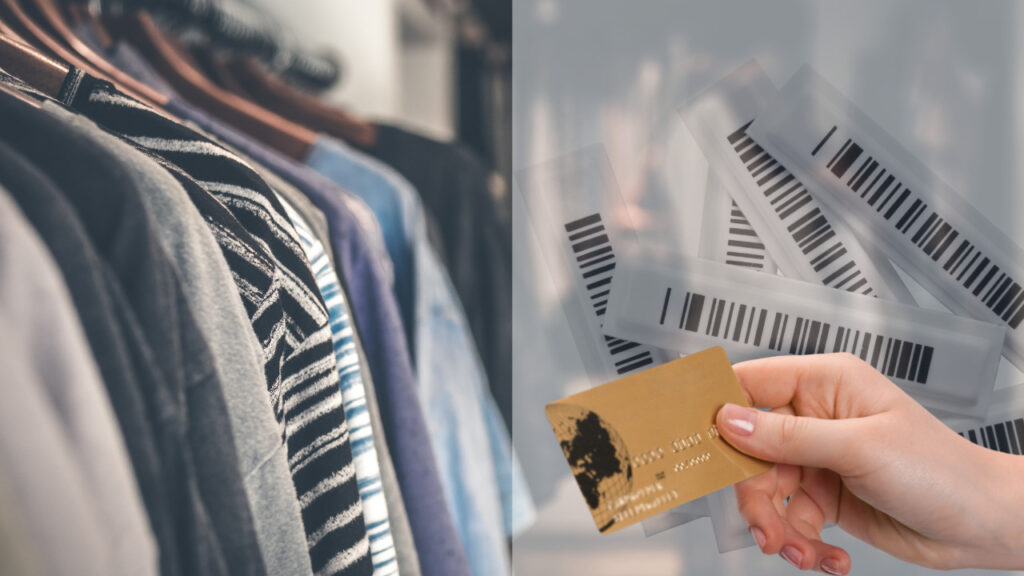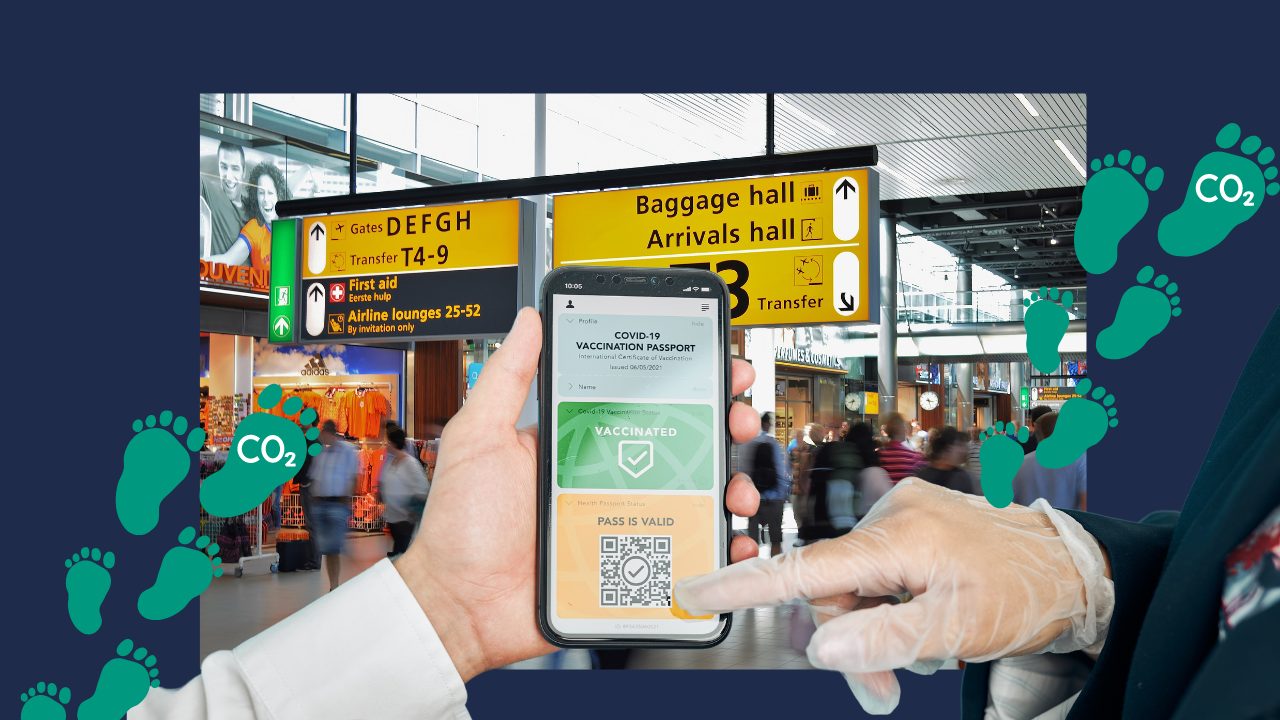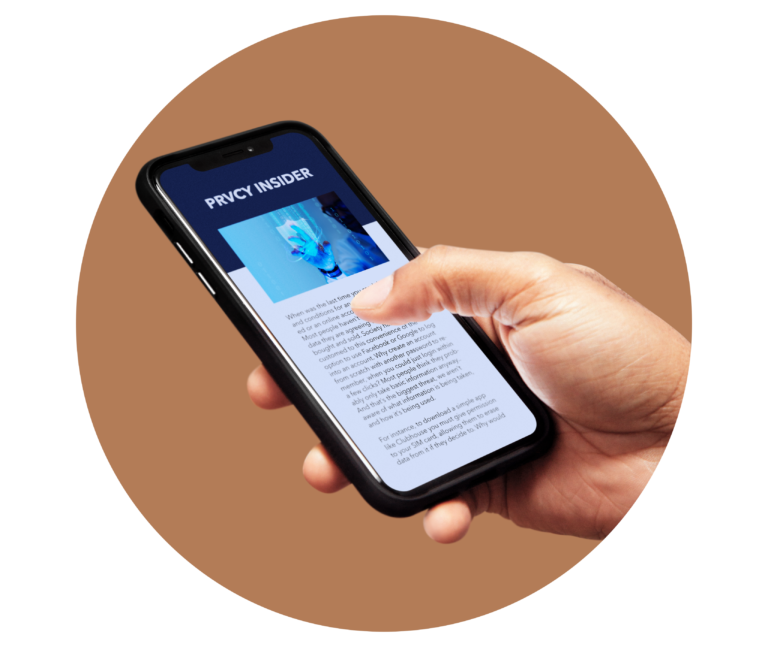Are we really aware that every tag or label in our products is trackeable.
What the averall use of this technology actually means to our own PRVCY?
Let's take a closer look on what exactly this RFID and NFC technology is and how it is used.
How does the RFID technology work?
RFID is the short for Radio Frequency Identification.
It’s a way for tagging and tracking items via radio waves. For this purpose a small transponder (tag or label) and a reader are used. The RFID label or tag functions as the transponder and is attached to the item that shall be tracked.
This tags or labels are in items that we purchase in our daily life. From clothes to shampoo. The readers are placed strategically to read the tags at relevant points to process the information which is written on the tags. This is how the alarm in the store is active when we move a item near the exit doors on a store or deactivate when we purchase it.
These tags usually have the size not bigger as a grain of rice. Technologically it’s even possible to produce them as tiny as 0,02286 millimeters, so now we have a RFID powder.
Usually the smaller chips or tags are only writable once, they are made of an analogical circuit for sending and a digital circuit to store information, they work passive and can only reach at a distance of a few meters. But there are also bigger labels which are re-writeable multiple times, with an own energy supply and the reach of some kilometers.
The upgrade of this technology are the NFC (near field communication) allows two devices — like your phone and a payments terminal — to talk to each other when they’re close together and enables contactless payments.
How is RFID tagging already implemented and used in our daily life?
The first and still biggest area of application of RFID technologies is the tracking of goods. All single items that are produced and shipped can be tracked at every single step on their way to its user and even further.
For logistics in every production or transportation company it is a huge simplification of tracking their goods. Inside the factory, when leaving and of course at every harbor, in every container entering a ship, plane, or other vehicle for transportation, until finally reaching the store or supermarket and are being taken home by us, the costumer.
At every single point of this transportation chain the RFID labels pass readers and all the information for identification and location of the goods are being transmitted. It is not only a great way to track items but also to prevent theft.
What works with goods, of course, is also possible for animals and humans.
We are used to chip our loved animals so we will always be able to find them, if they go missing one day.
In Germany since the 01 of November 2010 all passports are equipped with a 13,56 Mhz RFID chip which contains all personal and biometric data of it’s carrier, including two fingerprints.
So on every airport we pass the data on our passports is being read and processed. One more step to the complete transparent citizen.
RFID and NFC technology are easier and cheap ways to track us.
A few years ago some fancy clubs offered their guest the implant of RFID chips under their own skin to make entry and payment modalities faster.
Supermarkets without any cashier are here. The products are being scanned when leaving the marked with us and you pay contact less and in the future the bill will be automatically withdrawn from our bank account, just with the digital ID.
Let’s go even further, imagine every single component of our, clothes, shoes, credit car or even our car can be tracked by it’s producer or vendor. We might think that’s a crazy idea or even a conspiracy theory.
The truth is, your phone, have already NFC technology implemented for payments that is constantly communicating with other devices and tracking your location and consuming. Especially if you’re paying directly with Apple or Google Pay.
Michelin for example wants to equip all their tires with RFID chips from 2023 on. Actually they use this technology already since 2019. Truck tires are equipped with tags for a couple of years now. Of course, the companies explain their interests in using this technology with a better overview of their products life cicles and how they are used.
Another argument, as always, is our very own safety. These RFID chips can measure the air pressure in tires and send it to the board computer, so we as the driver can be warned about safety issues. It even could tell us when to buy new tires.
But obviously this technology can also be used to identify people’s habits and to sell this information to other companies which love to analyze our behaviour patterns and even know how to manipulate them.
So is this RFID technology actually a danger for our PRVCY?
To make a short resume on the RFID technology, we can state the big advantages for the industry in using these simple and fast ways of tracking their products.
But we already see the even bigger threat to our PRVCY when every single thing we use can be identified, tracked and even related to us.
Every RFID and NFC contains a single and exclusive ID number, if that number is connected with our digital ID, bank account, or cellphone it is very easy to frame our consuming habits, interest and financial situation.
We can even be located all the time if our shoes contain an RFID connected to the servers of a shoe company or our credit card is sending NFC signals to a database.
Crazy, right?
#PRVCYTips
what can we do to protect our PRVCY from RFID tracking?
As always, panic is not a good advisor and we also do not have to throw away our shoes, passports, and other ID cards.
1
Learn & Understand
The first step is knowing how exactly a technology works and recognize the immanent safety implications, so that we are able to avoid these attacks on our PRVCY.
2
Jammers
With jamming transmitters we can defuse the weak and passive signals of our passports and other RFID cards or chips. There are already wallets or jammers in card sizes on the market for little money.
3
Beware
Next time after shopping we certainly pay more attention to the tags on the gorgeous dress or cool sneakers we brought home. We should not only remove but also crash them. They often have a tiny antenna in the form of a spiral, just cut it in two.
4
Buy Local and re use
We can get more independent of big international companies for our daily supply again by buying more regional products or recycling old materials. Which is healthier and much more fun, but also helps developing our regions and social networks without falling into surveillance and tracking.
5
Be creative
For the interested or more advances techies between us, we can handcraft those jammers, wich we discussed earlier, on our own.
6
Bundled
The RFID readers have big problems in reading these RFID tags if they are bundled. So if we put some hundreds of tags in an old mp3 player casing, for example, it’s possible to confuse the readers so that they can’t work properly.
For PRVCY Members
One of the benefits of our PRVCY phone is the power to control sensors and the communications we are sending. We can make sure that our device is not activated with this simple steps:
Go to Settings
Connected Devices
Preferences
NFC OFF
To check out more features in our PRVCY phone, please visit our Transformation Course website here.
To finish I like to mention one example of companies wich decided not to use the RFID technology. The Benetton Group for example stated in April of 2003 that after a phase of testing and analyzing the RFID technology for their products, they came to the conclusion that it’s not adding any benifits for their productive or commercial organization.
Let’s hope it stays like this and more companies will follow this path!












